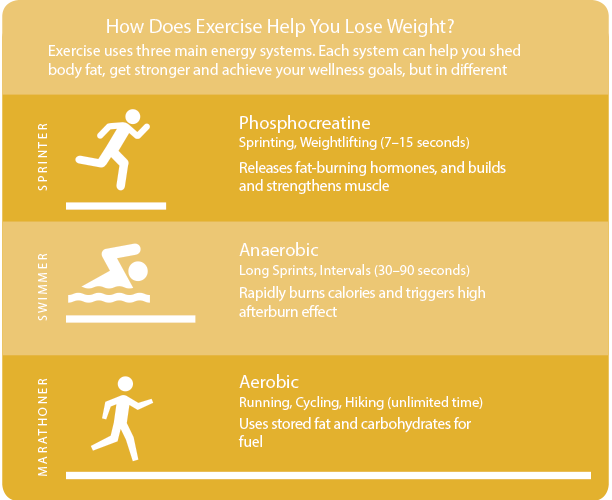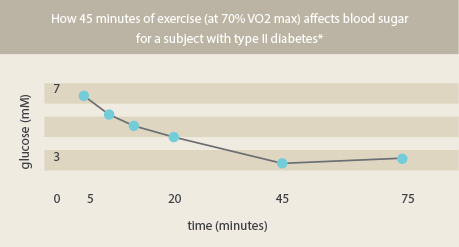Thank You Louise Hay
Tuesday, December 31, 2013
Sunday, December 29, 2013
Friday, December 27, 2013
Dalai Lama
"I feel optimistic about the future because humanity seems to be growing
more mature; scientists are paying more attention to our inner values,
to the study of mind and the emotions. There is a clear desire for peace
and concern for the environment."
Tuesday, December 24, 2013
5 Natural Remedies To Beat the Bloat

Unless you're a monk in a monastery or living in an ashram, the temptation to indulge more than usual may be too much to pass on all you're offered. After all, you don't want to be a spoiler among your peers as they celebrate with cakes, processed foods, and alcoholic beverages.
If you've been good with your diet while waiting for Santa, you may induce a bit of a shock to your system as you take in more than usual with foods you normally avoid.
All of this can lead to digestive issues with bloating discomfort that puts a damper on your holiday fun. The obvious symptom of bloating is a distended belly with either cramps, mild nausea, or other stomach discomforts.
This also invites flatulence and those embarrassing uncontrollable stomach rumbles and growls, possibly accompanied by constipation or diarrhea. The following suggestions are anecdotal and primarily short term solutions.
If you experience chronic bloating and indigestion, you should research a complete dietary makeover or consult a holistic practitioner for solutions.
5 Natural Remedies To Beat The Bloat
1. Pre-Tox With Probiotics
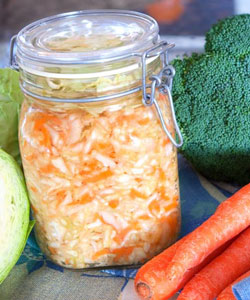 Before
the holidays get into full swing, start preparing your gut's digestive
capacity with probiotics. It's recommended that over the long term,
fermented food is better for the proper intestinal flora of 80-85
percent good bacteria to 15-20 percent pathogenic bacteria.
Before
the holidays get into full swing, start preparing your gut's digestive
capacity with probiotics. It's recommended that over the long term,
fermented food is better for the proper intestinal flora of 80-85
percent good bacteria to 15-20 percent pathogenic bacteria.If you haven't been doing this, do a crash probiotic binge with high quality supplements containing high counts of several strains of bacteria. This sort of thing should also be done temporarily during and after you've been forced into taking antibiotics. Then go long-term and find the fermented food or beverage solution that works for you.
2. Slow And Steady
Eat more slowly while talking a little less during meals. You can slow down by chewing more. Consuming liquids, plain water, beer, wine, whatever, should be done sparingly while eating. Try to avoid mixing in too many sugary items with whatever you eat. Say "no mas" before you're full.After a bout of heavy eating, take a walk. If you need to rest, lie down on your left side. Ayurvedic doctors, whose health focus is digestion, recommend these activities.
CONTINUE AT SOURCE
Sunday, December 22, 2013
What’s So Special About 45 Minutes? Exercising to Lose Weight
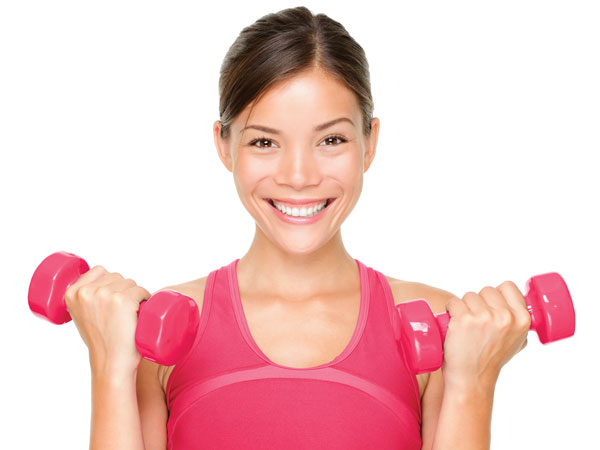
Unless you’ve been living under a rock for the last 50 years, you probably already know exercise is a crucial part of a healthy lifestyle.
There’s a mountain of scientific evidence showing that exercise can help you age more gracefully, get stronger, feel more energetic, lose weight and reduce your risk for dozens of diseases and conditions. Your question probably isn’t “Should I exercise?” but rather, “What sort of exercise should I do?” and “How much of it do I need?” Vitality: Simple Steps to Your Ideal Weight™ recommends 45 minutes of exercise per day. In the paragraphs ahead, you’ll read why that is the ideal workout length and what you should do with your 45 minutes.
The Science of Exercise & Weight Loss
When your muscles contract during exercise, they release hormones that help you reduce body fat. These hormones kick off other healthy processes in your body—increasing muscle, bolstering your immune system, and even healing and protecting neurons in your brain.Both high-intensity and moderate-intensity exercise can help you lose weight in a variety of ways. High-intensity exercise (think sprinting, resistance training, football, wrestling, etc.) burns through large amounts of calories quickly, and builds and strengthens muscle.
Moderate-intensity anaerobic or any aerobic exercise (think jogging, cycling or lap swimming) can grow the number of mitochondria (cellular power plants) in your cells, increase the volume of blood in your veins and arteries, and boost your overall cardiovascular health.
Aerobic exercise also directly taps your body’s fat-burning furnace—your aerobic metabolism—and clears sugar from your blood. An aerobic workout will start off using your body’s natural source of stored carbohydrates (called glycogen), but as you keep the workout going, you’ll increasingly use fat.
Most people’s bodies don’t surrender fat easily. A natural substance in your body called adenosine blocks your body from burning fat. But the unique blend of ingredients in the Access® Bar turns the key on adenosine, unlocking your fat stores and enabling you to use them right from the beginning of your workout.
Since the Access Bar’s introduction 20 years ago, Melaleuca customers have purchased 125 million bars and relied on them to lose weight, avoid soreness and make their workouts more enjoyable. Access Bars have also helped dozens of long-course triathletes, ultra-marathon runners, distance cyclists, and marathon swimmers to run, swim and bike thousands of miles while accessing more of their fat stores along the way. Tammy Van Wisse, for example, fueled a swim across the English Channel with Access Bars and lost 12 pounds in the process!
But most exercisers aren’t swimming the English Channel or competing in the grueling Hawaii Ironman® Triathlon. If you’re like most people, you just want to lose a little weight and get healthier, not spend an entire day swimming or cycling.
Ultimately, of course, the right exercise is the one that gives you the greatest health benefit and that you enjoy enough to keep doing
Getting The Dose Right
If it’s been a while since your schedule included regular exercise, it’s a good idea to take things one step at a time. A study of 20-to-30-year-old men who started exercising from nothing found that they lost more weight starting with 30 minutes of exercise than 60 minutes all at once. If you’re like them—starting from zero—doing 45 minutes might be too much at first. And even a daily exercise habit of 20 or 30 minutes can bring tremendous health benefits.“A daily exercise habit is the single most powerful therapy for improving both the quality and quantity of your life,” cardiologist and researcher James O’Keefe told Runner’s World. “Getting just 30 minutes daily of moderate or vigorous physical activity can cut your risk almost in half for premature death, diabetes, Alzheimer’s disease, depression and heart attack.”
One study found that runners had a 19 percent lower risk of death than non-runners. But the data also indicated that running has a “sweet spot” with regard to health benefits: Those who ran between 10 and 20 miles per week and who ran at a pace of 8:35 to 10 minutes per mile had an even lower risk of death than those who ran less or more, or faster or slower.
That information is great if you’re a runner. But what if you prefer to ride a bicycle, swim, hike or cross-country ski? What’s your sweet spot for getting the greatest exercise benefits?
“The latest data from our studies and others strongly suggests that the ideal dose of daily vigorous exercise is about 30 to 60 minutes,” Dr. O’Keefe says. “If you do more than 60 minutes of strenuous exercise daily, you start to lose some of the health benefits seen with lesser amounts of physical activity.”
Exercising for 45 minutes can also increase the number of calories you burn throughout the day—through the “afterburn effect” or “excess post-exercise oxygen consumption.” One study showed that men who intensely rode stationary bicycles for 45 minutes would burn 190 more calories within the next 14 hours. Another study found that exercising for 45 minutes could significantly reduce your appetite.
One additional benefit of a daily 45-minute bout of exercise, particularly for diabetics, is that it clears sugar from your blood and lessens the amount of insulin circulating in your veins and arteries—which ultimately means you’ll store less sugar as fat.
So once you’ve built up to 45 minutes of exercise per day, the next step, instead of increasing the amount further, is to bump up the intensity.
So once you’ve built up to 45 minutes of exercise per day, the next step, instead of increasing the amount further, is to bump up the intensity.
Interval Training
Interval training combines aerobic and anaerobic training to give you a shortcut to some of the fitness you’d normally achieve through long aerobic exercise. For intervals to be most effective, they should be done at high intensity, hence the term “high intensity interval training” or “HIIT.”As little as six 15-minute sessions of HIIT in two weeks can improve your muscles’ capacity for using oxygen and fat, boost your afterburn and increase your endurance. Your body will become more efficient at storing energy for workouts, and that will make it easier for you to do more exercise later.
Often, you’ll start out with a shorter “work” interval (say 10 seconds) balanced against a longer “rest” interval (perhaps two minutes). As your fitness improves, you can reduce the “rest” interval and increase the “work” interval.
“If intervals and strength training are so effective,” you’ll be tempted to ask, “should I do them all of the time?” The answer is that if your exercise regimen includes both intervals and resistance training, which can be very taxing on your body, you can wind up exhausted pretty quickly. Mixing in aerobic exercise, or “cardio,” with high-intensity interval training can help you avoid overtraining and the symptoms that come with it (irritability, interrupted sleep, injuries, delayed recovery, etc.).
Somewhere, you’ve probably heard the argument over whether intervals or cardio are superior. But the truth is that intervals and traditional aerobic exercise are not mutually exclusive; there’s no reason you can’t do both. If you don’t feel like doing a lung-searing, muscle-burning interval session, you can go for a jog, take a spin on a bicycle, enjoy a leisurely swim or do some other activity. To achieve the same results as the interval session, you’ll need to do more jogging, biking or swimming (closer to the top end of those 45 minutes), but a steady, nonstop workout is still an option.
Source: The Melaleuca Journal
Thursday, December 19, 2013
Tuesday, December 17, 2013
Five Creative Ways to Use a Stability Ball
The stability ball is a great tool for strengthening the core, but there are so many other exercises you can do with it. Here are five fun exercises that you can use to work the entire body using this incredibly versatile piece of equipment.
The Exercise: Rollouts
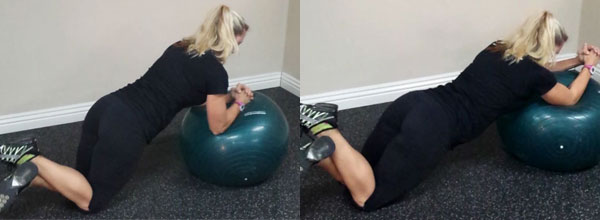
Targeted Muscles: Abs, back, chest and ats
The Movement: Bend your elbows at 90 degrees and place them on the top of a stability ball. Place your knees on the floor so that your knees, hips and shoulders are in a straight line. Engage your abs and open your shoulders, pushing the ball forward away from your body. Roll the ball out as far as you can without breaking the straight line between your knees and shoulders. Engage your abs and upper body, and then roll the ball back toward your body.
Challenge: For an added challenge, place your feet on the floor instead of your knees.
The Exercise: Bulgarian Split Squat
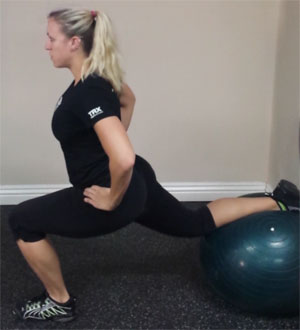
Targeted Muscles: Glutes and hamstrings
The Movement: Place the ball against a wall. Stand facing away, about 2 to 3 feet from the ball. Place the top of your left foot on the ball, so that you feel a slight stretch in your left hip flexor. Keep your shoulders square and chest up, and engage your core. Once balance is established, bend your right knee, keeping your right knee directly over your foot so that your shin remains vertical. Go as low as you can. Push through your right heel and stand back up. Repeat 10 to 15 times, and then switch legs.
Modification: To modify the exercise, start with a half squat, just to establish balance. You can also place the ball in a corner to prevent lateral shifting of the ball.
Challenge: If you have great balance and want an extra challenge, try this exercise without a wall behind the ball. As you lower, push the ball back with your foot, and then as you stand back up, pull it back in to starting position. You can also try holding on to dumbbells for more glute/hamstring activation.
CLICK TO CONTINUE AT SOURCE
Sunday, December 15, 2013
Recovery Redefined: Post-workout Nutrition
The
biggest error in the common view of nutrition is the focus on small
details. This error is evidenced by questions like, “How much protein,
carbs, fats should you eat?” Food is greater than the sum of its parts.
Food is meant to be enjoyed and we lose much of that enjoyment when we
treat it like chemistry.
It is important to eat after exercise—and it should be soon after. However, it is unimportant to focus on small details like an exact number of minutes after a workout or a precise amount of protein or carbohydrates. Encourage your clients to choose a post-workout meal that they look forward to enjoying—consider the tastes, textures and aromas of the food they want to enjoy after a workout.
When the body is consistently fed real foods, it gives you accurate signals of what it needs and when. All that is required is to listen to the intuitive signals the body sends and avoid the common mistake of over-thinking what “should” be eaten after a workout. Our bodies are smarter than any expert will ever be. If an individual is avoiding overly processed unnaturally sweet and salty foods, he or she can learn to trust the signals the body sends.
Eating on Rest Days
In general, a recovery day requires a slightly lower amount of food than a workout day. However, it is important to avoid another major error in nutrition and steer clear of the energy-balance equation. Many fitness professionals and even some people with advanced degrees who really should know better still erroneously promote this flawed concept—often with intelligent-sounding references to the First Law of Thermodynamics even though they have never studied physics.
This law has everything to do with matter and energy in chemistry and physics labs, and little to do with a sentient human with thoughts and feelings about food that powerfully affect body chemistry. The matter and energy that make up each human being is animated with consciousness not found in rocks, gasses and liquids. It is beyond the scope of this article to go into detail, but our thoughts, feelings and beliefs about the relative healthfulness of what we are eating directly affects the body’s response to that food.
This is another area where the wisdom of the body must be respected for true knowledge, understanding and appreciation for food to develop. Let your body tell you what it needs on recovery days and listen. A recovery day is not a day to “reward” oneself for exercise (as if exercise is a chore or tedious task for which there needs to be a reward). Exercise is its own reward—and so should be the act of eating.
If you are not exercising, your body will “ask” you for less food anyway. Attempting to quantify an exact amount of how much less is an exercise in tedium, drudgery and inaccuracy that is sure to remove any sense of enjoyment around eating and limit progress.
CLICK TO CONTINUE AT SOURCE
Saturday, December 14, 2013
Thursday, December 12, 2013
Mastering Stress Free Holidays
Mastering Stress Free Holidays with Cindy Solano, B.S., T.S.C., Ricki L. McKenna, C.N., Kimberlie Chenoweth, M.A. and Gwen Garcelon, MACL.
Saturday, December 14th
9:30 am to 2:30 pm
Third Street Center, 520 S. Third Street, Carbondale
How well do you take care of yourself during the holidays?9:30 am to 2:30 pm
Third Street Center, 520 S. Third Street, Carbondale
- Do you get stressed out with too much to do?
- Do you overindulge in things that do not serve you?
- Do you have trepidations about family gatherings?
Solutions are HERE in Four Transformational Mini-workshops!
Monday, December 9, 2013
Saturday, December 7, 2013
Thursday, December 5, 2013
Dangers of Chlorine Bleach


You clean your home to make it a safer, more enjoyable place to be. But what if the very products you use to clean your home are actually making it more dangerous and more uncomfortable for your family? For decades, customers have mistakenly equated chlorine bleach with words like “clean” and “safe”. But the reality is frighteningly far from it. That bottle of chlorine bleach in your laundry room, those cleaning products that proudly tout “with chlorine bleach” on their labels—they contain something far more sinister than a simple germ killer.
Coming Clean: The Deception of Chlorine Bleach
The killer in your cupboard.
Did you know that chlorine was one of the first ingredients used to create chemical weapons in World War I? During the Second Battle of Ypres, on April 22, 1915, the Germans released chlorine gas on their enemies—marking the first full-scale deployment of deadly chemical weapons in WWI.1 The lethal chemical is still used in warfare today, with insurgents of the Iraq war making bombs out of giant tanks of chlorine.2
Unfortunately, this lethal gas can also be created by accident when you unwittingly mix chlorine-based cleaning products with other common cleaning agents. And it isn’t always mixing two cleaners, together, sometimes it’s simply residue from a past cleaner that reacts with the chlorine-based product. In 2011, 152 workers were hospitalized due to exposure from chlorine gas after someone poured chlorine bleach into a container previously used with another cleaning solution.3
The dangers of chlorine bleach don’t stop there.
 This
chemical is caustic and deadly even before it is mixed with other
products. Of all injuries to young children cause by cleaning products,
exposure to chlorine bleach is the most common. The most common types of
injury from chlorine bleach are poisoning (68%), chemical burns (15.9%)
and skin/eye irritation (10.4%).4
According to the American Association of Poison Control Centers,
chlorine bleach is responsible for more than 38,000 reported poisonings
per year.5 As many people die from chlorine bleach poisoning as from rattlesnake and spider bites combined.6
This
chemical is caustic and deadly even before it is mixed with other
products. Of all injuries to young children cause by cleaning products,
exposure to chlorine bleach is the most common. The most common types of
injury from chlorine bleach are poisoning (68%), chemical burns (15.9%)
and skin/eye irritation (10.4%).4
According to the American Association of Poison Control Centers,
chlorine bleach is responsible for more than 38,000 reported poisonings
per year.5 As many people die from chlorine bleach poisoning as from rattlesnake and spider bites combined.6Recent medical studies have also revealed another disturbing trend. Chlorine bleach specifically aggravates the membranes in the lower respiratory system, causing shortness of breath and wheezing.
Studies show that a person with asthma who cleans in their home with chlorine bleach once a day will have a 5% increase in asthma attacks in a year. A person who cleans in their home with chlorine bleach twice a day more than quadruples this figure—they’ll experience 28% more asthma attacks.
So the next time you decide to clean with chlorine bleach, it might be good to add a ventilator in addition to the goggles rubber gloves and protective clothing most chlorine-based products recommend you use.
The cleaner that doesn’t actually clean.
If the dangers of chlorine bleach weren’t discouraging enough, here’s another sad truth many consumers don’t realize—chlorine bleach is not a cleaner.
It doesn’t get rid of grime, dirt or stains. What it can do is make color invisible to the naked eye, making us think it’s getting rid of stains.
Chlorine bleach is a highly reactive substance. It changes everything it comes into contact with, destroying it on a molecular level.
We see colors based on light absorption and reflection. When we see a red apple, it’s because the red color wavelength is reflected to us. When chlorine bleach comes into contact with stains, it destroys the molecules’ ability to reflect light. Chlorine bleach doesn’t get rid of dirt—it only turns it white. We may not be able to see the dirt and grime, but the truth is, the stain is still there.
To get your home truly clean you don’t need chlorine bleach. You need products that can safely remove hard water deposits, grime, and other stains and buildup. That’s something chlorine bleach just can’t do, and is just one of the many reasons why all EcoSense® products are chlorine bleach-free.

- http://www.history.com/this-day-in-history/second-battle-of-ypres-begins
- http://www.nytimes.com/2007/02/22/world/middleeast/22iraq.html?pagewanted=all&_r=1&
- http://www.cdc.gov/mmwr/preview/mmwrhtml/mm6028a3.htm?s_cid=mm6028a3_w
- Household Cleaning Product-Related Injuries,Pediatrics, September 2010
- 2008 Annual Report of the American Association of PoisonControl Centers
- As reported to Poison Control Centers over the last 10 years
Tuesday, December 3, 2013
Sunday, December 1, 2013
Food Democracy
Thank you Food Democracy Now!
Ron Finley plants vegetable gardens in South
Central LA -- in abandoned lots, traffic medians, along the curbs. Why?
For fun, for defiance, for beauty and to offer some alternative to fast
food in a community where "the drive-thrus are killing more people than
the drive-bys." Watch Ron here: http://youtu.be/EzZzZ_qpZ4w #UrbanGardening #Gardening #FastFood
Saturday, November 30, 2013
Simple Meditations
Thank You Simple Meditations
 XXX
XXX
We offer meditations that are simple, natural and easy to do. The goal of these meditations is to help you to relax and flow more easily with life, so that you can live with greater authenticity, spontaneity and ease. We have a brief description of each meditation below and a link to click for full instructions.
Our Meditation Guidelines page contains suggestions which can help support your practice of these meditations. If you are already meditating and finding it difficult, visit our Difficulty Meditating page.
Breath Meditations
Many meditations involve focusing on the breath. We offer two variations of breath meditations.
Breath Awareness Meditation
This is perhaps the easiest way to begin meditating and you may never need to look further. In this meditation, you bring your awareness to the natural flow of the breath, noticing the details of the sensation of breathing. When the attention wanders, it is gently brought back to the breath.
Stillness in the Breath Meditation
This is a variation of the Breath Awareness Meditation which can be done when you find that you are able to follow the breath for periods of time. It develops awareness of inner stillness. Read instructions for our Breath Meditations.
Nature Meditation
Simple Meditations
learn how to meditate using these easy instructions
 XXX
XXXWe offer meditations that are simple, natural and easy to do. The goal of these meditations is to help you to relax and flow more easily with life, so that you can live with greater authenticity, spontaneity and ease. We have a brief description of each meditation below and a link to click for full instructions.
Our Meditation Guidelines page contains suggestions which can help support your practice of these meditations. If you are already meditating and finding it difficult, visit our Difficulty Meditating page.
Breath Meditations
Many meditations involve focusing on the breath. We offer two variations of breath meditations.
Breath Awareness Meditation
This is perhaps the easiest way to begin meditating and you may never need to look further. In this meditation, you bring your awareness to the natural flow of the breath, noticing the details of the sensation of breathing. When the attention wanders, it is gently brought back to the breath.
Stillness in the Breath Meditation
This is a variation of the Breath Awareness Meditation which can be done when you find that you are able to follow the breath for periods of time. It develops awareness of inner stillness. Read instructions for our Breath Meditations.
Nature Meditation
This meditation is done outside in natural surroundings. It helps to enliven the basic intelligence of nature in our awareness and physiology. Our being resonates with the sight of a flower, sound of birds, feeling of the breeze. These experiences wake something up inside of us, and help to set our lives into a more natural rhythm. Nature lovers have discovered this secret without ever studying meditation! (Read instructions.)
Walking Meditation
Walking meditation can be just as profound as sitting meditation, and has the advantage of bringing the meditative experience into our activity. In addition to being relaxing, it allows you to be more present in your body and in the present moment. The simple experience of alternating steps with the left and right foot naturally helps create a meditative state. (Read instructions.)Meditation-in-Action — Taking it Easy!
Our Meditation-in-Action is a way of meditating while remaining active. It can be a very relaxing experience. It can also bring insights into how we resist the natural flow of life and help you to let go of that resistance to experience activity in a more natural and spontaneous way. This meditation can be for personal growth, or simply to relax. Usually this meditation will be most effective if you can take at least an hour to do it. (Read instructions.)Wednesday, November 27, 2013
Monday, November 25, 2013
Follow the R’s for a Mindful Meditation Experience
From Google's "Labeled for Commercial Reuse" Art Soul
The faculty of voluntarily bringing back a
wandering attention, over and over again, is the very root of judgment,
character and will… An education which should improve this faculty
would be the education par excellence.
William James
For the purist, the ideal meditation experience is simple: shine the light of your attention on your breath and keep it there. When your attention wanders, bring it back onto the breath-target with compassion and without judgment. (To put it in the simplest possible terms, this form of meditation is sometimes called “aim and sustain.”) This is the foundation practice for developing attentional stability and is the basis for other, more advanced forms of meditation.
There are many meditation teachers of course and many variations on this theme. Here is one that you might find useful. It’s built on a series of prompts, each word beginning with the letter R. This makes it simple and easy to remember.
This meditation works best when led by a teacher. Students set up a relaxed position and settle in. Once everyone is comfortable, the teacher reads the following script in a calm voice, pausing and editing as desired:
Relax your entire body… every cell, every system, every joint, every limb, every organ, every vessel. Relax the core of your body, your abdomen and your torso. Relax into your breath.
Release your expectations and your narrative… Release your explanations and your commentary… Release your predictions, your calculations and your speculations… Release your ruminations about the past and your worries about the future.
Relinquish your attachment to thoughts, ideas, outcomes and points of view… Relinquish your defenses and your judgments…. Relinquish your opinions and your attitudes.
Receive your experience of the
present moment, and all that comes with it… Feel what you’re feeling;
experience what you’re experiencing… Allow your body and your spirit to
be permeable to the world… Receive the insecurity, the uncertainty, the ambiguity and the emotion of the moment… Receive the blessings, the love, the kindness and compassion that has come your way…. Receive the totality of your life in whatever form it takes. (Note: see Rumi’s poem The Guest House.)
Return your attention to your breath.
Repeat this sequence as many times as desired. As you’ll discover, this guided practice is a form of relaxing work; it guides us through the process with an active, reversed effort. This sets us up to stabilize our attention and further develop our mindfulness.
Try it and let me know how it goes. AWESOME SOURCE:
Saturday, November 23, 2013
The Ultimate Gluten-Free & Vegan Thanksgiving Recipe Guide
The surest way to silence critics of your dietary choices is by filling their mouths with delicious food! That's why we asked an all-star squad of chefs and cooks to send us their favorite gluten-free takes on classic Thanksgiving recipes — many of which are also vegan — so that you can enjoy the holiday without sacrificing taste or adding stress.
Click through the links below to put together the ultimate gluten-free Thanksgiving meal:
Thursday, November 21, 2013
The Community of Rifle, Colorado
Awesome video of our neighbor down-valley Rifle, Colorado.In recent years the citizens and City staff have done an amazing job building community and revitalizing town.
Tuesday, November 19, 2013
MFHC – Eagle location, coming soon.
U.S. Health and Human Services (HHS) Announces New Healthcare Access Point Award for Eagle County, Colorado.
On November 7, 2013, the U.S. Department of Health and Human Services announced $150 million in awards to support new community health center access points across the country. Eagle County, Colorado, received one of the awards, under the auspices of Mountain Family Health Centers (MFHC). MFHC, working in partnership with Eagle County, Vail Valley Medical Center, the Eagle Care Clinic, and countless key community partners, will receive $650,000 annually to expand access to comprehensive primary health care in Eagle County.
“Our mission is to provide high quality, integrated primary, behavioral, and dental health care in the communities we serve, with special consideration for the medically underserved, regardless of ability to pay,” said MFHC CEO Ross Brooks. “This award will enable Eagle County residents to obtain the high quality, affordable health care we all desire.”
MFHC has 120 days to implement the new health care access point, which will be located in the current Eagle Care Clinic location at 320 Beard Creek Road, Edwards, CO, 81632. MFHC’s Board of Directors is committed to bringing its organizational strength and comprehensive array of culturally and linguistically-competent services to Eagle County, with a service plan designed to address unique needs, improve health status and decrease target population health disparities. When fully operational, the MFHC Eagle Care team will serve more than 3,500 patients each year.
“The Vail Valley Medical Center team has worked diligently for two decades to create an important health resource in the Eagle Care Clinic and I am very pleased that the work we started will continue to grow under Mountain Family Health Centers,” said Doris Kirchner, President and CEO of Vail Valley Medical Center. “Patients will see added services including dental and mental health care and greater access to financial assistance.”
“This outstanding award amount is due to the hard work of many partners over many years,” said Eagle County Commissioner Sara Fisher. “We’ve made access to health care a priority and we know our community – and most importantly our community’s health – will benefit from this resource.”
For additional information, contact MFHC CEO Ross Brooks at 970-928-1609 or rbrooks@mountainfamily.org.
For full Press Release, CLICK HERE.
Sunday, November 17, 2013
Thursday, November 14, 2013
Russian Subway - Exercise for a Ticket to Ride
As a promotion for the upcoming 2014 Sochi Winter Olympics, Moscow subways have added machines that calculate your squats, apparently 30 earns you a ticket to ride.
Monday, November 11, 2013
Glenwood Moms for Moms Giving Back
‘tis the season &
Glenwood Moms for Moms is giving back...
Join us this holiday season
as we come together as the strong community of Moms that we are, to help out
those in need. We have two organizations that we will helping this year:
Both organizations will be
speaking at our November Meet & Mingle to share their stories & at our
December Meet & Mingle we will prepare all the packages.
Please email me or
call 719.207.3653 if you have any questions or would like to meet up to donate
items-- we will soon have drop off locations in town too.
Advocate Safehouse Project
- A local non-profit that strives to 'promote healthy relationships free from violence through education, advocacy, empowerment and safehousing.'
- Glenwood Moms for Moms will be putting together gift bags for the women & their children.
- Many women who go into the safehouse used to pamper themselves and wish they could get back to that by painting their nails, wearing makeup, perfume and really just pampering themselves.
- Children & Adolescents are also part of this program so with our gift bags we can include toys or books (these items can be gently used)
- In addition to the women & children the Safehouse is continually in need of items that are necessary to maintain a household such as laundry soap, fabric softener, dish soap, paper towels, toilet paper, aluminum foil and saran wrap, tupperware, cleaning supplies.
Cakes Helping Kids
- Join Mom Member Janille Hudson & her family in their vision to help kids in need. They have chosen to help Primary Children's Hospital in Salt Lake City, this holiday season by sending them medical play dolls to give back to a program that has helped their family in the past.
- Their goal is to be able to provide 100 or more dolls for Primary Children's and they will need our help to do this. The dolls are very simple to sew and can be made very inexpensively & kids LOVE stuffing them!!
- You can find the pattern & read more about Cakes Helping Kids by CLICKING HERE .
- These dolls can be dropped of at 3112 Hager Lane or at any our drop off points (to be announced)!
- If you have any questions for this project you can contact Janille at 801-702-7600.
Subscribe to:
Posts (Atom)




